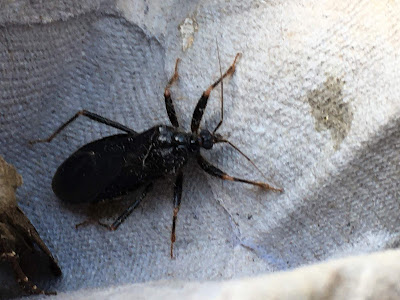I didn't want to disturb mine, so that it will carry on sleeping on its eggbox until this afternoon. But you can see Technicolour pictures on previous year's blog posts if you have the time and interest, for example here and also here, the second one rather exciting including a ruler. My second picture today meanwhile shows quite an assembly of hawk moths this morning, which I hope isn't too confusing. If you look closely, you should be able to find three Poplars, an Eyed and an Elephant, along with the Privet. The only further one which I can reasonably expect now is the Hummingbird, nectaring on strongly-scented garden flowers during the daytime in August. But there are other, much rarer ones, such as the Silver-striped. So, as with last Autumn's Clifden Nonpareil, you never know.
Another newcomer for the year is that bright little button the Green Oak Tortrix, a favourite among micro-moths because of its shining exception to their usual muddle of hard-to-decipher patterns in browns, oranges and blacks. I've shown it with a couple of other green arrivals this morning, a Green Carpet and a Light Emerald.
I'm a bit uncertain about the visitor above, in spite of his or her prominent, staring 'eye' and streaked shoulders. It has a bit of the look, from the Moth Bible, of a White-line Dart but would be extremely early for that. I shall seek help. Update: silly me - see Edward in Comments. It's just a Large Yellow Underwing. My only excuse is the ridiculous amount of variation in this common moth eg see the other completely different one immediately below. Meanwhile, below we have a composite, clockwise from top left: Marbled Minor spp, Large Yellow Underwing, Poplar Kitten and Bright-line Brown-eye.
My final picture is of a different form of aerial excitement: a neighbour came and banged on the door while we were having a rest from non-stop sunny gardening, and said "Come and see! There's a smiling face in the sky!" And so there was; indeed while we watched, the little plane involved painted a second one in smoke. It looks easy from the ground but the skill involved in this kind of thing is of the order of the scale-fixing needed by Michelangelo for the Sistine Chapel. In my opinion, anyway.

















































